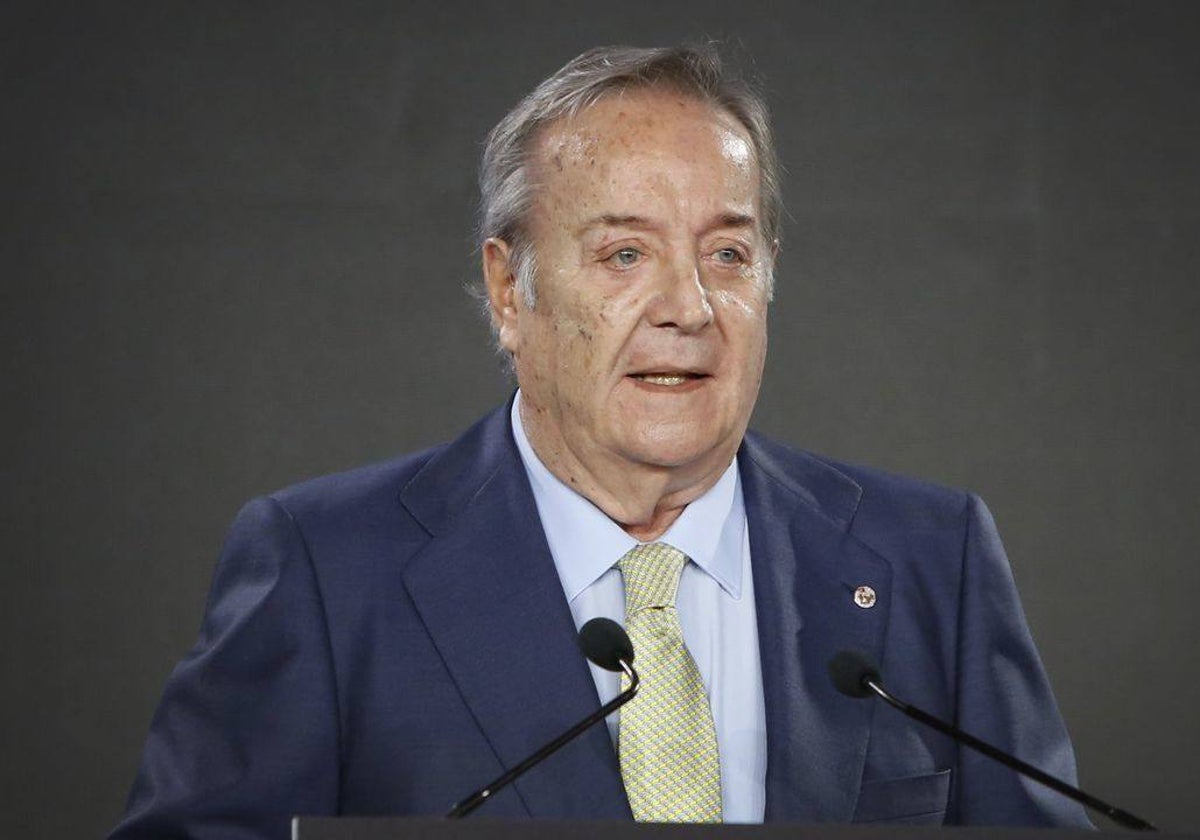

Sections
Services
Highlight

Miguel Lorenci
Madrid
Miércoles, 28 de agosto 2024, 19:20
With the death of Santiago Rey Fernández-Latorre, who passed away this Wednesday at the age of 85, Spanish journalism and business suffer an irreparable loss. As President and Editor of La Voz de Galicia, one of the leading newspapers in Spanish press, Rey played a crucial role in the promotion, modernization, and consolidation of the centenary Galician publication and regional press in Spain from the late Franco era through the Transition to the present day.
A beacon for entrepreneurs and a model for journalists, he was one of the most prominent figures in Galician and Spanish society. He leaves behind the most brilliant period of the Galician newspaper and all the companies of the Corporation he supervised and promoted for more than 60 years.
Grandson of the founder of the Galician newspaper, Juan Fernández Latorre, he had been associated with the publication for six decades. His health had deteriorated irreparably in recent days. He was accompanied in his final moments by his wife, Salomé Fernández-San Julián Martínez, and his closest collaborators.
The mortal remains of the legendary entrepreneur were laid to rest on Wednesday afternoon at the Santiago Rey Fernández-Latorre Museum, located on the company’s premises in the Sabón industrial estate (Arteixo), where expressions of grief and respect followed.
Born in A Coruña on August 31, 1938 - "on top of a printing press," he proudly repeated - he was the son of Emilio Rey Romero and María Victoria Fernández-Latorre. After earning a law degree, Rey began his business career in 1961. Two years later, he took over as manager of La Voz under his father's presidency to develop a long and brilliant career at the helm of the publication.
Appointed CEO of the newspaper in 1971 and President of La Voz de Galicia Corporation - owner of La Voz de Asturias and Radio Voz - in 1988 he consolidated the group of companies linked to the publication, making it a reference for Galicia by defending editorial positions committed to the ideals set forth by its founder in 1882.
Under Rey's leadership, the centenary publication reached a daily audience of one million people. His role was crucial for the entire sector, holding positions at the National Press Institute (IPI), Antena 3, Spanish Newspaper Publishers Association (AEDE), or COLPISA, an agency he helped found.
He was responsible for modernizing a newspaper that established itself at the technological forefront despite all kinds of difficulties during uncertain years for both the country and journalism. He clearly advocated for democracy, civil rights, and economic and social progress for Galicians while supporting projects to promote Castelao's language.
His unwavering liberal spirit led him to confront power on several occasions, resulting in reprisals such as fines and threats for using Galician in his pages and defending its normalized use. Democracy found in him a staunch ally in claiming and shaping Galicia's autonomy, which he defended in his articles above all localism.
He had taken over a newspaper that was already Galicia's main publication, printing several thousand copies distributed mainly in its birthplace city and surroundings. Under his leadership, local editions were created throughout Galicia—an exemplary coverage model for other regional media that was completed in the 1980s and remains today as a model of logistical efficiency and proximity to citizens with specific information about cities and regions across Galicia.
The newspaper ultimately became Galicia's proud voice, achieving the long-standing dream of uniting the community with information and opinions on Galician society's realities, concerns, needs, and challenges. Meeting its daily appointment with readers contributed—and continues to contribute—to Galicia's development economically, socially, and culturally.
If La Voz was pioneering in Europe by introducing linotypes and using photography and infographics decades before technological explosions under Rey's mandate saw photocomposition introduced alongside early computers and significant multimedia development. In 1992 he inaugurated the first automated printing press connected via fiber optic to central editorial offices; by 2000 La Voz launched its website giving national-international projection.
Marrying tradition with innovation contributed significantly towards forming solid public opinion while strengthening journalism pillars: local information; Galicia’s own expression; broad cosmopolitan vision on Spain/world matters.
Named Distinguished Son Of A Coruña amongst many recognitions awarded Grand Cross Of Civil Merit (1986). In 2022 marking La Voz De Galicia’s 140th anniversary Felipe VI decorated him at newspaper headquarters Grand Cross Of Isabel la Católica "in recognition almost sixty years’ journalism commanding your life’s newspaper making it A Coruña leader firstly; then Galicia; now long time one most read Spain."
Publicidad
Publicidad
Te puede interesar
Publicidad
Publicidad
Esta funcionalidad es exclusiva para registrados.
Reporta un error en esta noticia

Debido a un error no hemos podido dar de alta tu suscripción.
Por favor, ponte en contacto con Atención al Cliente.

¡Bienvenido a TODOALICANTE!

Tu suscripción con Google se ha realizado correctamente, pero ya tenías otra suscripción activa en TODOALICANTE.
Déjanos tus datos y nos pondremos en contacto contigo para analizar tu caso

¡Tu suscripción con Google se ha realizado correctamente!
La compra se ha asociado al siguiente email
Comentar es una ventaja exclusiva para registrados
¿Ya eres registrado?
Inicia sesiónNecesitas ser suscriptor para poder votar.